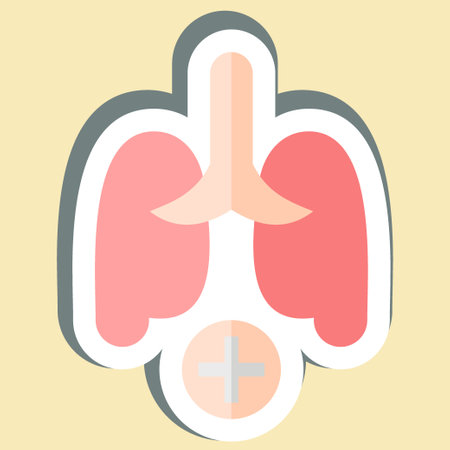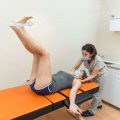1. Introduction: Understanding Post-Surgical Rehabilitation
When someone has knee or ankle surgery, the journey to full recovery doesn’t end when the operation is over. In fact, what happens after surgery is just as important as the procedure itself. This phase is called post-surgical rehabilitation, and it plays a crucial role in helping patients regain their strength, movement, and confidence.
Physical therapy is a cornerstone of this recovery process. After surgery, many people experience pain, swelling, stiffness, and weakness in the affected joint. Without proper rehabilitation, these issues can limit mobility and delay a return to normal daily activities—like walking, driving, or even playing with kids and grandkids.
Physical therapists are specially trained healthcare professionals who help guide patients through safe exercises and activities tailored to their specific needs. They not only address physical problems but also educate patients on how to protect their new joint and prevent future injuries. Here’s a simple overview of why rehabilitation matters so much after knee or ankle surgery:
| Key Benefits of Rehabilitation | How Physical Therapy Helps |
|---|---|
| Reduces pain and swelling | Uses targeted exercises and hands-on techniques to manage discomfort |
| Restores range of motion | Guides gentle stretching and movement to safely increase flexibility |
| Builds strength | Creates personalized exercise plans to strengthen muscles around the joint |
| Improves balance and coordination | Teaches balance training to lower risk of falls or further injury |
| Supports faster return to daily life | Encourages safe progress toward walking, climbing stairs, or returning to sports |
The main goal of post-surgical physical therapy is to help each person get back to doing the things they love, whether that means running marathons or simply keeping up with family life. With guidance from a physical therapist, patients learn how to move confidently again—step by step.
2. Common Knee and Ankle Surgeries in the U.S.
In the United States, knee and ankle injuries are common, especially among athletes, active adults, and older adults with joint degeneration. These injuries often require surgical intervention to restore mobility and reduce pain. Understanding these surgeries helps patients and families know what to expect during rehabilitation with a physical therapist.
Knee Surgeries
The knee is one of the most frequently injured joints in the body. Here are some of the most common surgical procedures for knee injuries:
| Surgery Type | Description | Typical Patient Demographics | Main Causes |
|---|---|---|---|
| ACL Reconstruction | Rebuilding the torn anterior cruciate ligament (ACL) using a graft from another tendon. | Athletes (especially soccer, basketball, football players), young adults | Sports injuries, sudden stops or changes in direction, trauma |
| Meniscus Repair | Suturing or removing torn cartilage in the knee joint. | Active adults, older adults with degenerative tears | Twisting injuries, aging-related wear and tear |
| Total Knee Replacement | Replacing damaged knee surfaces with artificial parts. | Older adults (usually 60+ years) | Osteoarthritis, rheumatoid arthritis, severe joint degeneration |
Ankle Surgeries
Ankle injuries can also lead to surgery, especially when ligaments or bones are badly damaged. Some common ankle surgeries include:
| Surgery Type | Description | Typical Patient Demographics | Main Causes |
|---|---|---|---|
| Ankle Ligament Repair (Broström Procedure) | Tightening or repairing torn ligaments on the outside of the ankle. | Athletes, people with chronic ankle instability, all age groups | Repeated sprains, sports injuries, accidental twists or falls |
| Ankle Fracture Surgery (Open Reduction and Internal Fixation) | Realigning broken bones and holding them together with hardware like plates or screws. | All age groups, often middle-aged adults after accidents or falls | Falls, car accidents, high-impact sports injuries |
| Ankle Fusion (Arthrodesis) | Permanently joining bones of the ankle to relieve pain from severe arthritis. | Older adults with advanced arthritis or deformity | Severe arthritis, post-traumatic damage, failed previous surgeries |
The Importance for Physical Therapy Rehabilitation
No matter which type of surgery is performed, physical therapy plays a key role in recovery. Each procedure has its own challenges and goals for regaining strength, flexibility, balance, and function. Knowing which surgery you’ve had helps your physical therapist create a personalized plan to get you back on your feet as safely and quickly as possible.
![]()
3. The Physical Therapist’s Role in Recovery
How Physical Therapists Help After Knee and Ankle Surgery
After knee or ankle surgery, physical therapists (PTs) play a crucial role in your recovery journey. In the United States, PTs are valued members of the healthcare team. They work closely with surgeons, nurses, and most importantly, with you—the patient—to ensure the best possible outcomes. Here’s how they help you get back on your feet:
Evaluation: Understanding Your Needs
Your recovery begins with a thorough evaluation. The physical therapist will assess your current abilities, pain levels, range of motion, strength, and mobility. This helps them understand exactly where you are in your healing process and what challenges you might face.
| What PTs Evaluate | Why It Matters |
|---|---|
| Pain Levels | Helps tailor exercises to avoid discomfort |
| Range of Motion | Identifies stiffness or movement limitations |
| Muscle Strength | Detects weakness needing improvement |
| Walking Ability | Ensures safe mobility and reduces fall risk |
| Surgical Site Condition | Monitors swelling or signs of infection |
Collaborative Goal-Setting: Making Recovery Personal
A big part of American physical therapy culture is working together to set goals that matter to you. Whether you want to return to sports, get back to work, or simply walk without pain, your PT will listen and help create realistic milestones. Together, you’ll track progress along the way.
Examples of Common Goals After Knee or Ankle Surgery:
- Bending the knee or ankle without pain
- Walking independently without crutches or a walker
- Returning to favorite activities like hiking or dancing
- Improving balance and preventing future injuries
Developing Individualized Plans of Care
No two patients are alike. Your PT designs a unique treatment plan based on your specific surgery, health history, lifestyle, and goals. This plan may include:
- Therapeutic Exercises: To improve strength and flexibility at your pace.
- Manual Therapy: Hands-on techniques to reduce swelling and improve movement.
- Pain Management: Using modalities like ice, heat, or electrical stimulation when needed.
- Education: Teaching you how to move safely at home and prevent re-injury.
- Progress Tracking: Regular check-ins to celebrate improvements and adjust your plan if needed.
Your physical therapist is not just a coach—they’re your partner throughout recovery. With their guidance, many people achieve better results than they thought possible after knee or ankle surgery.
4. Core Components of Post-Surgical Rehab Programs
Evidence-Based Interventions for Knee and Ankle Rehabilitation
Physical therapy plays a crucial role in helping people get back on their feet after knee or ankle surgery. In the United States, rehab programs focus on evidence-based interventions that help patients return to their daily routines, work, and favorite activities. Here’s a breakdown of the core components used by American physical therapists to support recovery:
Progressive Exercise
After surgery, movement may be limited, but gradual exercise is vital for regaining strength and mobility. Progressive exercise plans are tailored to each person’s stage of healing and lifestyle needs. These might include:
| Stage | Example Exercises | Purpose |
|---|---|---|
| Early Phase (Weeks 1-2) | Ankle pumps, quad sets, gentle range-of-motion | Reduce swelling, maintain joint movement |
| Mid Phase (Weeks 3-6) | Mini-squats, heel raises, stationary cycling | Build strength, improve balance |
| Advanced Phase (Weeks 7+) | Lunges, step-ups, agility drills | Prepare for return to sports or work activities |
Manual Therapy Techniques
Hands-on methods like joint mobilization and soft tissue massage are commonly used by American therapists. These techniques can help decrease stiffness, relieve pain, and promote circulation—key for busy lifestyles where getting back to activity quickly matters.
Pain Management Strategies
Pain control is a big part of post-surgical rehab. Physical therapists use a mix of cold packs, electrical stimulation (TENS), taping, and gentle movements to help manage discomfort. Educating patients on safe pain relief options fits well with the American emphasis on self-management and minimizing opioid use.
Patient Education Tailored to American Lifestyles
Education empowers patients to take charge of their recovery. U.S. therapists often provide guidance on:
- Home exercise programs: Easy-to-follow routines that fit into family schedules or work-from-home setups.
- Activity modification: Tips for safely returning to driving, walking pets, recreational sports, or physically demanding jobs.
- Preventing re-injury: Advice on proper footwear, using assistive devices (like crutches or braces), and safe movement patterns at home or outdoors.
- Navigating health care: Information about insurance coverage for therapy visits and accessing community resources.
Main Takeaways from Evidence-Based Rehab Components
| Component | Main Benefit | Examples in Everyday Life |
|---|---|---|
| Progressive Exercise | Restores function & independence | Biking with family, hiking local trails |
| Manual Therapy | Eases pain & improves flexibility | Bending down safely at work or home |
| Pain Management | Makes recovery more comfortable | Sitting through long meetings or car rides without discomfort |
| Patient Education | Puts you in control of your healing journey | Knowing how to modify gym routines or avoid common pitfalls at home |
The combination of these evidence-based components ensures that post-surgical knee and ankle rehabilitation is effective, efficient, and personalized for the diverse needs found across American communities.
5. Setting Expectations: Timelines, Outcomes, and Return to Activity
Understanding the Recovery Process
After knee or ankle surgery, many people wonder how long it will take to get back on their feet and resume normal activities. Physical therapists in the U.S. play a crucial role in setting realistic expectations for recovery and guiding patients through each stage of rehabilitation. Knowing what to expect can help patients stay motivated and avoid frustration during their recovery journey.
Typical Recovery Timelines
Recovery timelines can vary based on the type of surgery, individual health, and commitment to rehab exercises. The table below provides a general overview of common benchmarks for post-surgical knee and ankle rehabilitation:
| Stage | Knee Surgery (e.g., ACL repair) | Ankle Surgery (e.g., ligament repair) |
|---|---|---|
| Initial Recovery (0-2 weeks) | Pain management, gentle movement, swelling control | Pain management, rest, swelling control |
| Early Rehab (2-6 weeks) | Range of motion, begin weight-bearing as tolerated | Range of motion, gradual increase in weight-bearing |
| Strengthening (6-12 weeks) | Progressive strengthening, balance training | Strengthening exercises, balance work |
| Advanced Rehab (3-6 months) | Functional movements, sport-specific drills if needed | Higher-level activities, return-to-sport training |
| Return to Full Activity (6+ months) | Full return to sports/work with therapist clearance | Full return to sports/work with therapist clearance |
Please note:
These are general guidelines. Your physical therapist will personalize your plan based on your surgery and progress.
Benchmarks for Progress
Your physical therapist will use specific benchmarks to track your improvement. These may include:
- Pain levels: Decrease in pain during movement and daily tasks.
- Swelling reduction: Less swelling around the joint compared to immediately after surgery.
- Range of motion: Improved ability to bend and straighten the joint.
- Strength: Ability to perform key exercises without difficulty.
- Balance and stability: Improved confidence standing and walking.
- Tolerance of activities: Increasing time spent on feet or performing work/sports drills.
Strategies for Safe Return to Work, Sports, and Daily Life
A safe return to activity is a top priority in American physical therapy practice. Therapists use several strategies to help patients transition smoothly back to work, sports, or everyday life:
- Gradual progression: Activities are added slowly to prevent re-injury.
- Education: Patients learn proper body mechanics for lifting, walking, or running.
- Simulated tasks: Therapists may have patients practice job or sport-specific movements in the clinic.
- Cueing and feedback: Therapists give real-time tips on form and technique.
- Coping skills: Addressing fear of movement or re-injury through education and encouragement.
- Lifestyle modifications: Suggestions for ergonomic changes at work or home when necessary.
The Importance of Communication
Your therapist will regularly check in about your goals—whether it’s returning to construction work, playing weekend basketball, or chasing after your kids. Open communication ensures that rehab stays focused on what matters most to you. Remember: every person’s recovery looks a little different, but with patience and teamwork between you and your physical therapist, you can get back to doing what you love safely and confidently.


